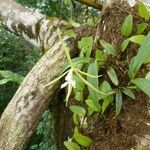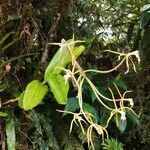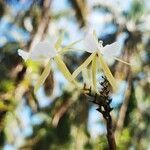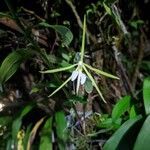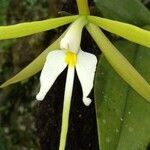Variable, caespitose or subrepent, epiphytic plants up to 1 m. tall. Stems slender, simple, covered with the scarious leaf-sheaths or becoming naked. Leaves 5-15 cm. long and 0.8-6.5 cm. broad, elliptic, elliptic-oblong, ligulate or oval, acute or obtuse, coriaceous to fleshy. Inflorescence a 1-to few-flowered terminal raceme (1 flower open at a time); rachis when present fractiflex; flowers large, usually white. Sepals similar, 35-90 mm. long and 2-5 mm. broad, from filiform to linear, acute or acuminate. Petals similar to the sepals but smaller, 35-80 mm. long and 1-3 mm. broad. Lip unguiculate, claw adnate to the column; lamina up to 65 mm. long, prominently 3-lobed; lateral lobes subparallel, acute, oblique, lanciform, 10-40 mm. long; mid-lobe subfiliform, 20-40 mm. long.
